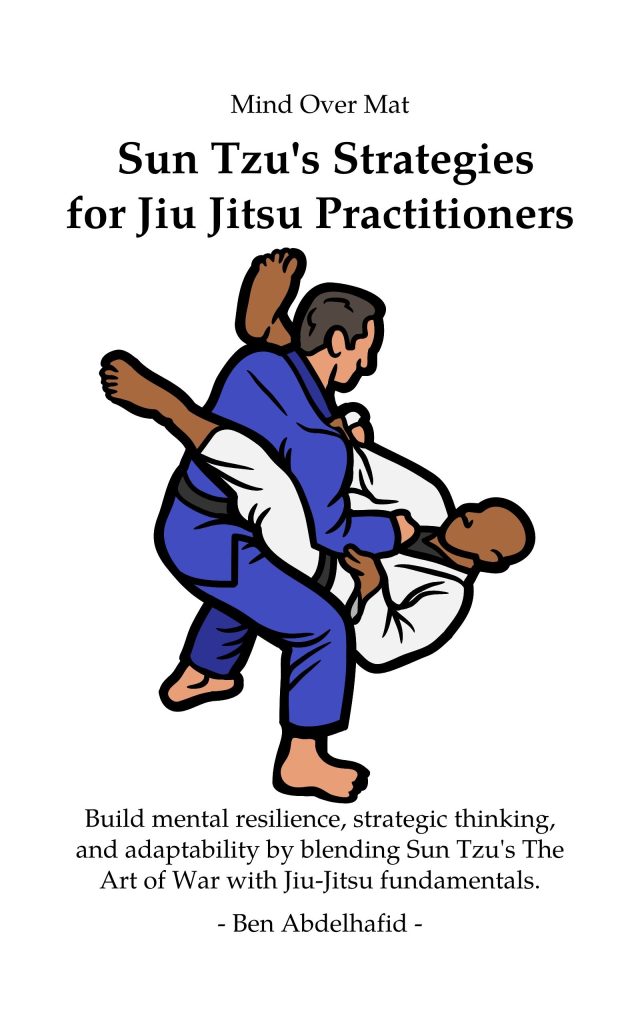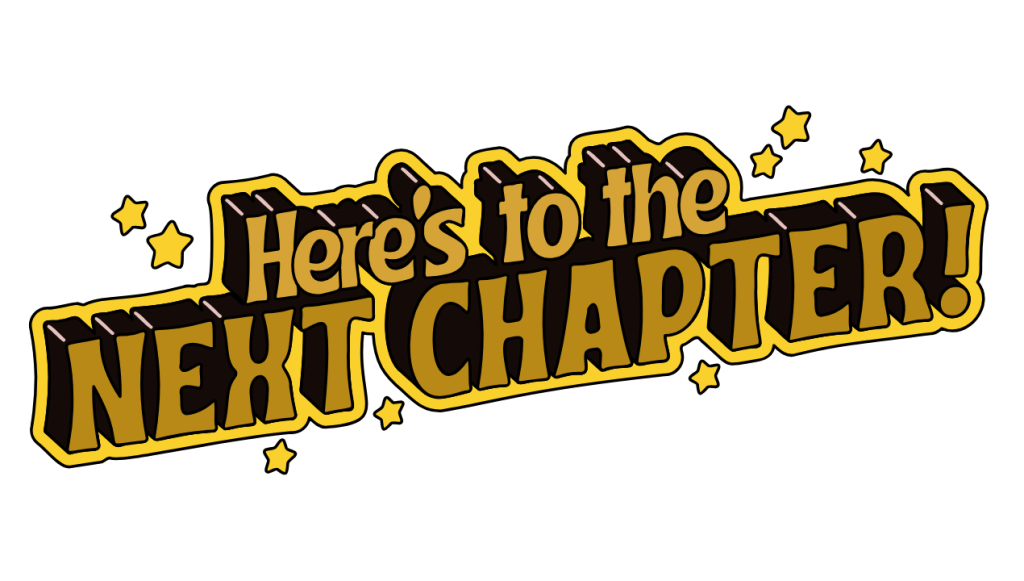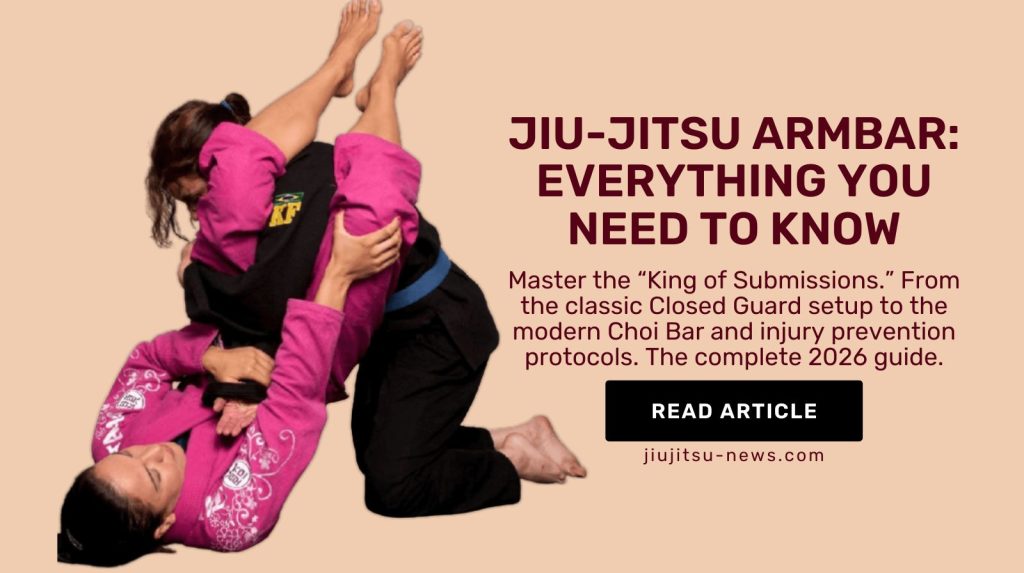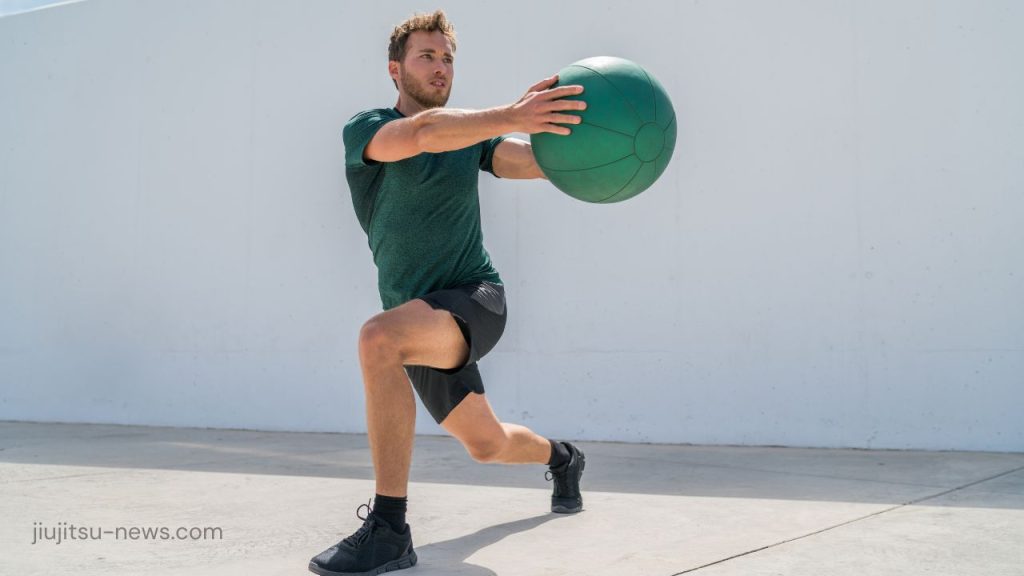
Chapter 4: The Element of Deception
Using Feints and Fakes in Jiu Jitsu
Using feints and fakes in jiu jitsu is akin to employing strategic deception in warfare, a concept deeply rooted in Sun Tzu’s teachings.
Here’s Why?
1# Create Openings
When playing fighting sports, being able to trick your opponent can help you attack or get away.
A dodge is a trick that makes you think you’re going to do something you’re not, while a fake can be imitating an attack or position to get a reaction.
These moves can throw off an opponent’s flow and make them defensive, which lets the practitioner take advantage of their hesitancy or bad judgment.
2# Psychological Impact
The psychological effect of feints and fakes is what makes them work.
By making their opponent unsure, a practitioner can change what they expect, which may make them commit to a counter that leaves them open to attack.
As an example, a practitioner might start with a move that looks like a takedown but ends with a guard pull or sweep. This not only makes the enemy confused but can also be used against them because they are reacting.
Sun Tzu said that all fighting is based on lying, which shows how important it is. In jiu-jitsu, this is true because martial artists who can trick their opponents often have an edge in battle.
3# Predict the Opponent’s Reactions
To learn how to use feints and fakes, you need to know a lot about time and distance.
Practitioners need to learn how to read their opponent’s body language and change how they move to match. It is possible to do this by drilling specific patterns that use fakes in attacks or defenses.
It’s important to make a smooth flow so that the practitioner can switch between real attacks and fake moves without losing speed.
The feints have a better chance of changing the opponent’s behavior if they are smooth and believable.
4# Enhance Your Game
Adding feints to sparring sessions can also help a martial artist improve their overall game.
People can learn to read their opponents and change their strategies in real time by practicing these skills in a live setting.
By watching how different opponents react to different fakes, a practitioner can learn a lot about their habits and change how they attack.
This flexibility is an important part of both jiu-jitsu and Sun Tzu’s philosophy, which says that you should be able to change your strategy depending on the situation.
Reading Your Opponent’s Intentions
A key part of jiu-jitsu is being able to figure out what your opponent is trying to do. This is based on the ideas that Sun Tzu wrote about in “The Art of War.”
A jiu-jitsu practitioner must be able to read their opponent’s body language and subtle cues during a match, just like a general must look at the battlefield and watch how the enemy moves.
People who have this skill can predict attacks and effectively defend against them, which can turn the tide of the battle in their favor.
Learning to read people’s intentions can help you not only improve your defensive strategies but also your offensive ones.
The following tips will help you figure out what your opponent is planning:
1# Watch Your Opponent’s Body Language
First, look at their posture and how they are moving.
Small changes in how their weight is distributed, the tension in their muscles, or the way they breathe can all be signs that they are about to move.
If a person leans forward and drops their hips, for example, they might be getting ready to try to take you down.
A person who stands with their feet wide and raises their hands may also be signaling a guard pull or sweep.
By paying attention to these physical cues, you can learn a lot about what they are going to do next and plan your response accordingly.
2# Watch the Tempo
Understanding timing and rhythm is another important part of reading with intentions. Each practitioner’s movements have a different speed, and noticing patterns can help you figure out how they work. It is possible to plan ahead and change your strategy if you notice that your opponent often attacks after a certain set of moves. You can change the flow of the match by breaking your opponent’s rhythm or setting your own. This will make them react to your pace instead of their own.
3# Watch Your opponent’s Mental State
Think about how your opponent’s actions are affected by their mental state.
Similar to how Sun Tzu said it was important to know your enemy, knowing how your enemy is thinking can help you win a battle.
A competitor who looks tense or angry might make more mistakes, while an opponent who is sure of themselves might be more aggressive.
By figuring out these psychological cues, you can use weaknesses to your advantage and make room for your techniques.
Holding your nerve and showing confidence can also change the way your opponent thinks, giving you even more control over the match.
4#Practice and Experience Matters
Reading intentions is a skill that needs to be practiced and learned.
Training sessions for sparring are a great way to improve this skill.
Work out with different people and pay close attention to how they move and how they act.
As time goes on, you will start to see patterns and get a better sense of what your opponents are trying to do.
Creating Opportunities Through Misdirection
A basic strategy that can help a jiu-jitsu practitioner be more effective on the mat is to create opportunities by misleading the opponent.
Sun Tzu said that misdirection means taking an enemy’s attention off of your real goals.
This idea can be used in many areas of jiu-jitsu, from setting up submissions to making space for sweeps or escapes.
By getting good at misdirection, a practitioner can change how their opponent sees things, giving them the upper hand in a match.







